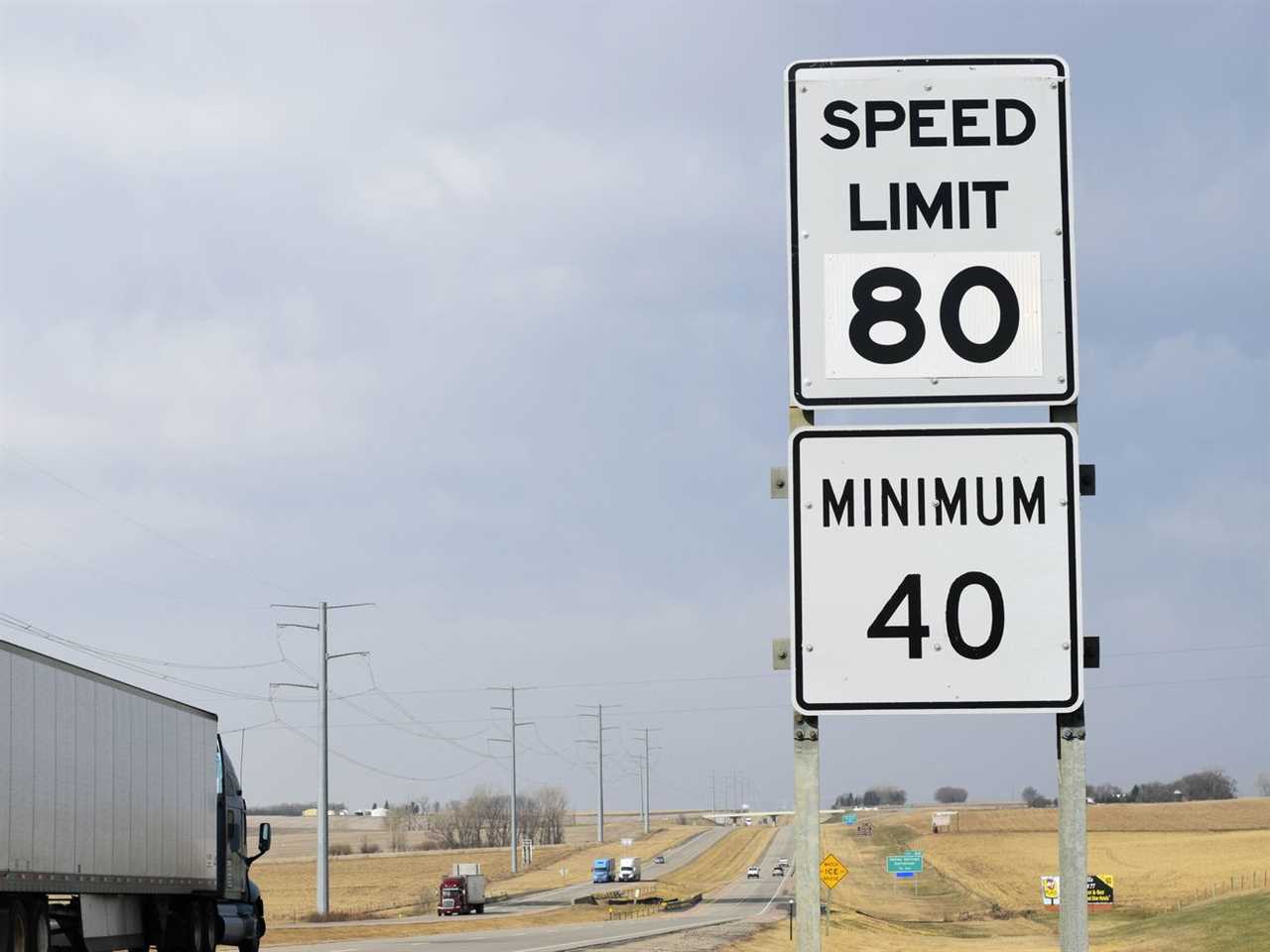
Reckless speeding is epidemic in the US. This simple technology could save tens of thousands of lives.
Speeding plays a role in over 12,000 US car fatalities per year, around a third of the national total. But an emergent technology could dramatically reduce that death toll, if not eliminate it entirely.
The auto industry has done little to address speeding, and it may be worsening the problem. Although the highest speed limit anywhere in the US is 85 mph (on Texas State Highway 130), most new cars can easily reach triple digits. Speedometers often rise all the way to 155 mph, and even safety-conscious Volvo lets drivers reach 112 mph (those behind the wheel of a Tesla Model S Plaid can top 200 mph).
Sure, a driver passing a semitruck on an interstate might need to briefly break the posted limit. But it’s hard to imagine a scenario where hitting 100 mph on a public road is anything short of reckless. Pedestrians are in particular danger; according to a 2011 study by the American Automobile Association, their average risk of death is 10 percent if struck by a car going 23 mph, but 50 percent at 42 mph and 75 percent at 50 mph.
Being surrounded by multiple tons of metal affords car occupants some protection, but they are hardly invulnerable. Many of the most catastrophic car crashes involve extreme acceleration, such as one in January in which a driver reached 124 mph on a 45 mph North Carolina highway before flipping the car and killing a University of North Carolina undergraduate.
In 2022, a woman flew through a Los Angeles intersection at 130 mph, more than triple the 35-mph speed limit, before striking multiple vehicles and killing five people, including a pregnant woman and her 11-month-old son.
At a national level, Americans are far more likely to die in crashes than those living in other rich countries; even comparably spacious and car-clogged Canada has a per capita crash death rate that is 60 percent lower than its southern neighbor.

Steve Story/Getty Images
Happily, a common-sense solution is available. A technology known as Intelligent Speed Assistance (ISA) can make it difficult or impossible for drivers to drastically exceed the posted limit. Over the last few months, a bevy of federal, state, and local officials have called for ISA adoption on all new cars, or at least on those driven by public employees or those with a history of reckless driving.
From New York City to California, speed-limiting technology is having a moment.
The European Union will require speed limiters in new cars. Could the US do the same?
It’s been a long time coming. Rudimentary speed limiters have been available for over a century; in 1923, Cincinnati residents voted on a road safety proposal that would have mechanically restricted any car within city limits to 25 mph. That referendum was defeated, and the idea of constraining car speed subsequently faded from popular view.
But the recent emergence of ISA has thrust it back into policy conversations. Initially conceived of in France 40 years ago, modern ISA systems can be divided into two categories, both of which use GPS and digital maps to ascertain the speed limit on the roadway where a car is traveling.
“Active” ISA systems completely prevent further acceleration after the vehicle hits a given speed ceiling, such as five miles over the posted limit. “Passive” ISA is more permissive, relying on sounds, vibrations, or accelerator resistance to compel the driver to slow down (a determined driver can ignore those warnings and keep speeding up).
Both versions of ISA offer something rare and enticing: a straightforward technological fix for a major source of roadway carnage.
In 2022, the European Union adopted a rule requiring all new cars to be outfitted with passive ISA, starting this July. That was a watershed moment for ISA adoption — and it raised eyebrows across the Atlantic.
Later that year, New York City Mayor Eric Adams announced a groundbreaking pilot program in which ISA would be retrofitted into several dozen city-owned vehicles. The preliminary results are encouraging, showing a 36 percent reduction in hard braking (often used as a proxy for unsafe driving). Adams has spoken about potentially expanding the pilot across tens of thousands of vehicles within the city’s fleet, a move that could amplify safety benefits because cars with ISA also compel drivers behind them to obey the speed limit.
The next big move came last October, when the National Transportation Safety Board released its investigation into a particularly gruesome 2022 crash in North Las Vegas, in which the driver of a Dodge Challenger blasted through a red light at 103 mph (speed limit: 35 mph), striking a minivan and killing himself and eight other people. For the first time, NTSB officially recommended that the National Highway Traffic Safety Administration (NHTSA), the vehicle safety division of the federal Department of Transportation, require all new cars sold in the US to contain ISA.
Although the NTSB lacks the power to enforce its recommendation, it left an impression on California State Senator Scott Wiener, a San Francisco Democrat. In January, Wiener unveiled a bill that would set a deadline of 2027 for all new cars sold in the Golden State to contain an active version of ISA, set to 10 mph over the speed limit (a to-be-defined override would be available in emergencies). Wiener told me that even if his bill doesn’t pass, he hopes that it inspires elected leaders elsewhere to pick up the ISA baton and run with it.
A few weeks later, the District of Columbia City Council unanimously passed a street safety bill that included a new pilot program to install ISA in the vehicles of drivers who “commit serious speeding crimes,” according to Council member Charles Allen. That approach could prevent habitually reckless drivers from further endangering everyone else on the street. (For example, the man who caused the 2022 crash in North Las Vegas already had three prior speeding convictions.)
Momentum behind ISA is clearly growing.
Speed limiting is commonsense policy — but it’ll be an uphill climb
NHTSA has shown no signs of requiring ISA at the federal level but provided a statement that it was “initiating new research this year” into the technology, without offering further detail.
Why the lack of urgency, despite US crash deaths being up 27 percent from a decade ago? ISA elicits fierce resistance from carmakers (whose marketing ads often feature their vehicles zooming through streets with a tiny disclaimer that they were filmed with stunt drivers on a closed course). The Alliance for Automotive Innovation, an auto industry lobbying association, responded to the California ISA bill by questioning the technology’s reliability.
Some car owners, too, may be wary, imagining scenarios where ISA prevents them from rushing to the hospital. Such occurrences are rare, and when they do happen, an untrained driver blasting past speed limits puts everyone in a dangerous situation. Every ISA proposal I have seen exempts emergency vehicles while permitting regular drivers to go a few mph over the posted limit.
Inevitably, there will be visceral opposition from those who view speed-limiting technology as an attack on “freedom,” even though breaking the posted limit is, by definition, already illegal. “Forget your constitutional rights, those can be damned, even your movement controlled,” fulminated Fox News host Laura Ingraham last November, after the NTSB endorsed ISA. (Several decades ago, the introduction of seat belt laws sparked a similar response.)
But ISA supporters have logic on their side. It is nonsensical that shared e-scooters weighing a few dozen pounds are widely throttled at 15 mph or less, while cars that are 100 times heavier and able to travel 10 times faster have no such mechanical restrictions. The status quo is even more outrageous at a time when the US is mired in an ongoing road safety crisis, including a 40-year high in pedestrian deaths.
With each new ISA bill and pilot program, the Overton window widens, and a federal requirement becomes a little more conceivable. For the sake of everyone on the road — including those who walk, bike, or ride transit as well as those inside a car — let’s hope that day arrives soon.
----------------------------------------
By: David Zipper
Title: Driving at ridiculous speeds should be physically impossible
Sourced From: www.vox.com/future-perfect/24086680/speeding-limit-car-crash-accidents-deaths-intelligent-speed-assistance-tech
Published Date: Fri, 01 Mar 2024 12:00:00 +0000






